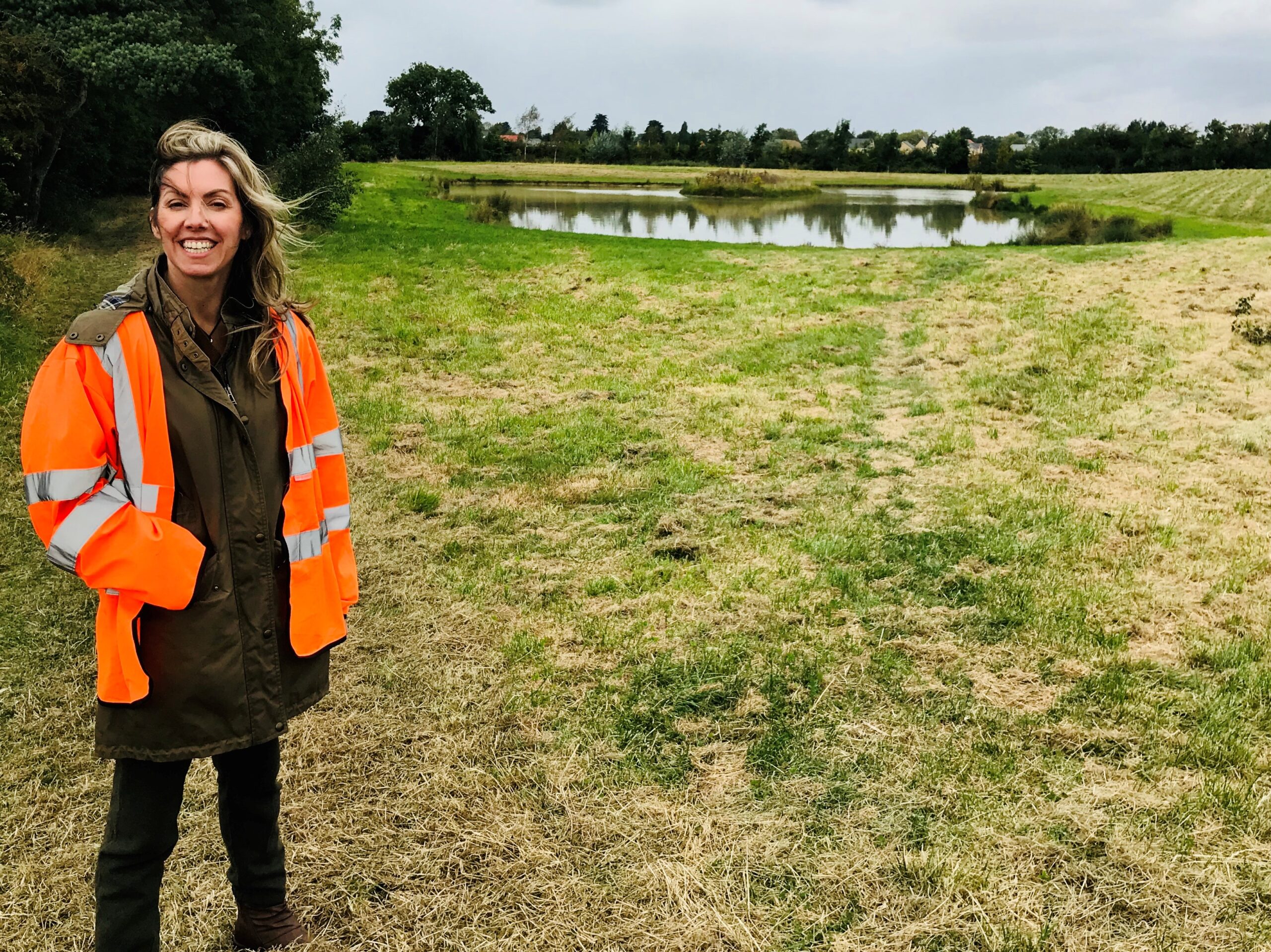Community energy projects bring benefits to local groups across England by helping them to maximise the income-generating potential of renewable energy and put this income to work in their area. By increasing the uptake of locally owned renewable energy, these initiatives support the Government’s targets for reaching net zero.
Projects like these benefit the communities by promoting rural growth, creating new jobs and volunteering opportunities, and enabling communities to access the economic benefits associated with renewable energy schemes.

Community Energy Fund – open now
The Community Energy Fund (CEF) is a £10m grant scheme for urban and rural communities to develop energy services to benefit their local area.
The funding will help to kickstart clean energy projects including small-scale wind farms and rooftop solar partnerships, as well as battery storage, rural heat networks, electric vehicle charging points. It can also be used to fund fuel poverty alleviation schemes such as energy efficiency, retrofit, and advice projects.
The CEF aims to empower local people to take control of their energy future by:
– Increasing the number of community-owned low-carbon energy assets
– Supporting communities to reduce energy cost and demand
– Generating local income through community-owned energy assets
– Reinvesting income locally and kickstarting private investment
– Supporting local jobs, growth and volunteering opportunities
– Enabling places to benefit from clean, renewable, local energy
The fund will achieve its aims by supporting the earlier-development stages of community-scale projects.
About the funding
Funding will be offered for a:
– Stage 1 Feasibility Grant of up to £40,000 to produce a feasibility study to establish the technical and financial viability of a project and/or
– Stage 2 Development Grant of up to £100,000 for a more detailed investigation of the technology, for planning applications and to develop a business case.
Please note: the fund is for the development of projects from concept to investment-ready scheme. It does not provide capital funding for the installation of projects themselves.
Who can apply to the CEF?
The fund is for eligible community-based organisations on England with projects that will bring benefits to the local community. These are:
– Amateur sports clubs
– Charitable Incorporated Organisations
– Community Benefit Societies
– Community Interest Companies
– Co-operative Societies
– Development Trusts
– Faith Groups
– Pre-commencement societies
– Registered charities
– Registered Social Landlords (partnered with a community group)
– Town or Parish councils
Applicants need to show that a good level of community engagement has been carried out and that there is genuine community support for the project, including plans for ongoing community engagement.
How to apply
The Community Energy Fund is a national scheme funded by the Department for Energy Security and Net Zero. The five Local Net Zero Hubs across England will be delivering the fund, with the Midlands Net Zero Hub supporting projects in the Midlands. Please read through the guidance below and send your completed application form to the Community Energy Fund inbox.
Stage 1 applications
Stage 1 Feasibility Grant of up to £40,000 to produce a feasibility study to establish the technical and financial viability of a project.
– Stage 1 Application Guidance
Stage 2 applications
Stage 2 Development Grant
of up to £100,000 for a more detailed investigation of the technology, for planning applications and to develop a business case.
– Stage 2 Application Guidance
Supplementary documents
– Community Energy Fund Feasibility Report Structure
The next round is open for applications until 4th June 2024. Subsequent rounds will be:
– 13th September 2024
– 8th November 2024
If you have any questions about the application process, email us at communityenergyfund@nottinghamcity.gov.uk.
If your community groups is in another region, you can apply through your Local Net Zero Hub: Greater South East Net Zero Hub, South West Net Zero Hub, North East and Yorkshire Net Zero Hub, or North West Net Zero Hub.
Successful Round 1 Projects
Discover the community groups who have already received funding for their project through the Community Energy Fund below.
Stage 2 funding will allow the Club to progress a planning application to develop a local microgrid at the club grounds, including 1.5 MW ground mounted solar PV, 50kW Li-Ion battery storage, 150kW Compressed air energy storage system, and Dual point EV chargers.
Developing this project means the Club can meet the increasing demand and cost for heat and power and provide a better service to the local community. Investment in the energy project can be recouped through savings and other revenue generating opportunities that an investment in a grid upgrade would not achieve.
Bonsall Energy Group wishes to look into the feasibility of wind turbine technology over a range of 0.4 to 2.0MW rated turbines and one solar ground scheme in Bonsall. The generators would have a connection to the DNO grid, possibly via HV substations. The aim of the scheme would be to trade electricity with, and between, local community generators, householders, and businesses.
Brassington, in common with other villages within the Derbyshire Peak District, is not connected to the mains gas grid for various historic and economic reasons. Most of the houses are heated by oil or LPG, though a number still rely on solid fuel and electric immersion heaters for their hot water.
The purpose of this project is to develop the recently completed feasibility study into a worked up and fully costed design proposal. Following the successful completion of the Stage 1 feasibility study completed through the Rural Community Energy Fund, Brassington Community Heating CiC will continue the project through Community Energy Fund.
The council is looking to investigate a large community owned solar farm. Spanning 70 acres of Grade 4/5 agricultural land, Park Farm Claverdon has a National Grid substation on the land, offering easy grid connectivity. It nestles discreetly along a railway line, invisible from all of the community’s vantage points. It is the perfect location for a community solar farm.
Crowle Parish is located in rural Worcestershire and does not have access to the gas grid. Homes are heated by electricity, oil, gas, and other forms of fossil fuels.
The project will investigate a 3mW solar farm supported by 4mWhs of battery storage to generate electricity approximately equivalent to 120% of demand from the c600 homes in the Parish and neighbouring villages.
Identified a primary site located on a 6-acre plot of land owned by the Parish Council. Early analysis suggests financial viability, community support, and that there is a nearby 11Kv grid line that should provide a suitable point of connection.
The project proposed by Derbyshire Dales Community Energy is for the Bakewell golf club to provide a feasibility study for ownership of ground-based solar arrays, a wind turbine, rooftop solar, and air source heat pumps.
DDCE is a well-established organisation that has successfully carried out a Stage 1 feasibility study under the Rural Community Energy Fund. This study helped to evaluate the potential for renewable energy projects within the Dales region. This led to the successful installation of two solar arrays within Matlock.
The project would be innovative by producing heat to the main clubhouse, adjacent cottage, and industrial unit by heat pump or a biomass plant. Identifying renewable energy opportunities through small-to-medium scale wind turbines and solar arrays. Two 7kW EV charging stations are also proposed for the community’s use.
The project would be an ambitious programme of installing 2MW of PV on schools across Leicestershire within three years. These arrays would be funded by community shares to alleviate the cost of energy for schools.
The feasibility study would assess the 260 school sites and provide a PV model of shortlisted host sites. The project strategically dovetails into Leicestershire County Council’s Net Zero Strategy and helps to deliver the Innovate UK funded Leicestershire CAN (Collaboration to Accelerate Net Zero) project (Pathway Places Demonstrator).
The Grimsby Onshore Wind Project will assess feasibility for onshore wind at four locations around North East Lincolnshire. The process will upskill Grimsby Community Energy to deliver the projects and operate long term. The group has ambition to install between 80kW and 1.2MW across 1-6 turbines depending on the outcome of the feasibility studies.
This pilot demonstrator will complete a technical and social feasibility study to offer deep retrofit options, assessment, and design work for a whole street of 26 homes, which includes Registered Providers, private landlords, and owner-occupiers.
The whole process – including assessment, design options, decision-making – will be filmed to powerfully communicate and de-mystify retrofit. This will be invaluable for training, leading into support for up-skilling. It’s also critical to build trust, credibility, and give wider replicability and scalability.
Sherriffhales Community Energy currently own and operate a 3.2MW community solar farm to the west of Sheriffhales, Shropshire. They have been successfully distributing its surplus incomes into the community since 2016.
SHCE believes that they can increase their impact in the community by leveraging their main asset, renewable electricity, to their advantage in a green transition by supplying their power directly to consumers via an EV charge station, consisting of four 150kW chargers.
Bishop’s Castle is an off the gas grid town of 600 houses, plus a leisure centre, a community college, a sawmill, and various small businesses. For the older properties in the centre of the town it would be very difficult to replace the oil boilers with individual heat pumps.
This project aims to deliver low carbon heat to the SpArC Leisure Centre, the Community College, and at least 100 homes in Bishop’s Castle, Shropshire. The heat would be generated by air to water heat pumps, and most of the electricity required would be generated by a 1MW wind turbine and 500kW of solar.
The proposed project is a combination of photovoltaic ground mounted panels (80kW) and growing food sustainably between the panels, located in a field with an existing wind turbine in Hockerton.
There will be a functioning electrical system and a demonstrator of how to increase the overall output by growing food in the same area as the solar array. The project will also show how farming techniques can be used to mitigate water runoff, thus reducing risks of flooding.
The project will be based in the market town of Bewdley and will investigate the potential of a water-based district heating network. This town has been selected due to the locality of the River Severn and three high-usage sites with potential of extending to heritage and listed buildings. The area is also affected by fuel poverty and households have a lower income.
This project will link into the Heat Networks Delivery Unit, community share offer, and other private/public sources to fund the capital costs of the 2MW heat pump. This heat pump will provide a heat demand of c.10,000MWhours per annum which is enough to heat 1000 homes.
The Village Green Wilsford Net Zero Project has been created to alleviate fuel poverty and showcase a smart community energy model for achieving carbon reduction cost effectively.
The proposal involves an innovative scheme with ground source heat pumps behind the village hall in addition to solar panels both on the hall roof and on top of an eight-bay EV parking canopy on land opposite affordable homes.
The smart EV chargers (22kW) would be available for use by anyone in the village. These shared resources would all be connected by a private wire from an energy centre with battery storage in the village hall and connected to the neighbouring homes. There would be an additional DC 50kW fast Vehicle-to-Grid EV point at the village hall.
Feasibility studies
Take a look at the feasibility studies for our RCEF projects to be inspired for your own community energy project.












